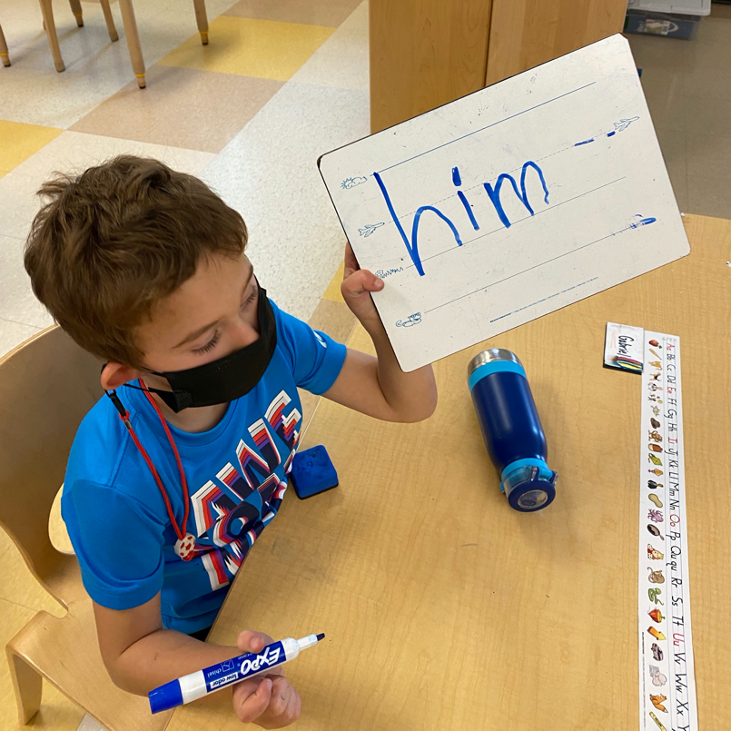Yoga pose like an x-ray fish! Now a yak! 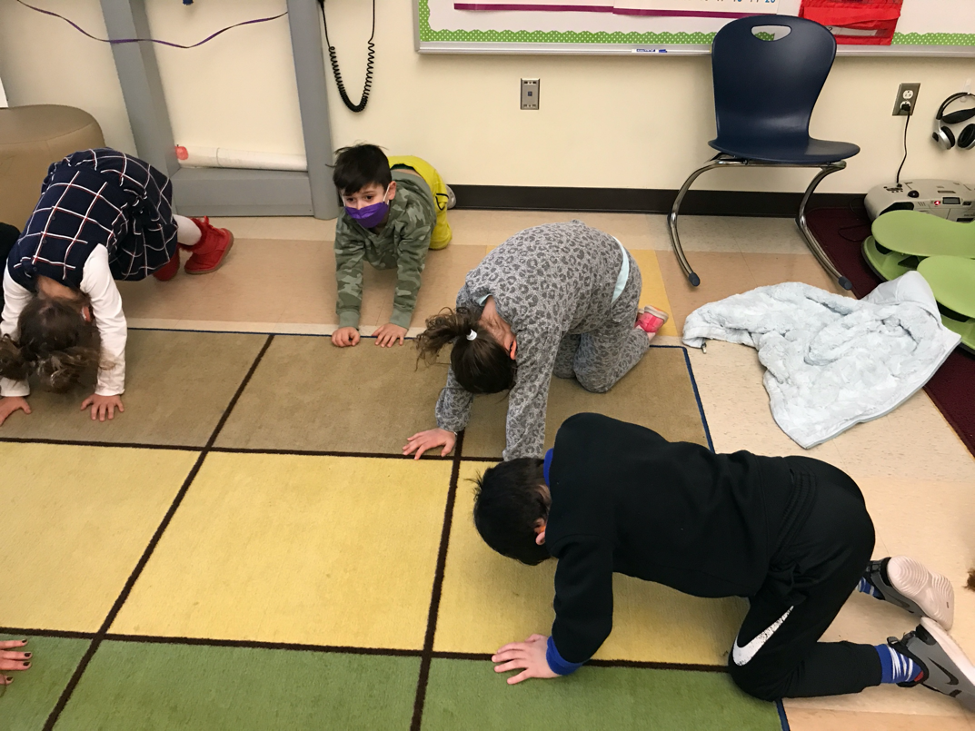 Literacy in Kindergarten is active — using the mind, body, and senses. “We focus on small group learning to offer differentiated instruction and spiraled review of foundational skills,” says Kindergarten Lead Teacher Rachel Liptz. “We also incorporate both yoga poses and a key work movement along with a letter sound to provide students with multiple ways of experiencing and expressing their learning.
Literacy in Kindergarten is active — using the mind, body, and senses. “We focus on small group learning to offer differentiated instruction and spiraled review of foundational skills,” says Kindergarten Lead Teacher Rachel Liptz. “We also incorporate both yoga poses and a key work movement along with a letter sound to provide students with multiple ways of experiencing and expressing their learning.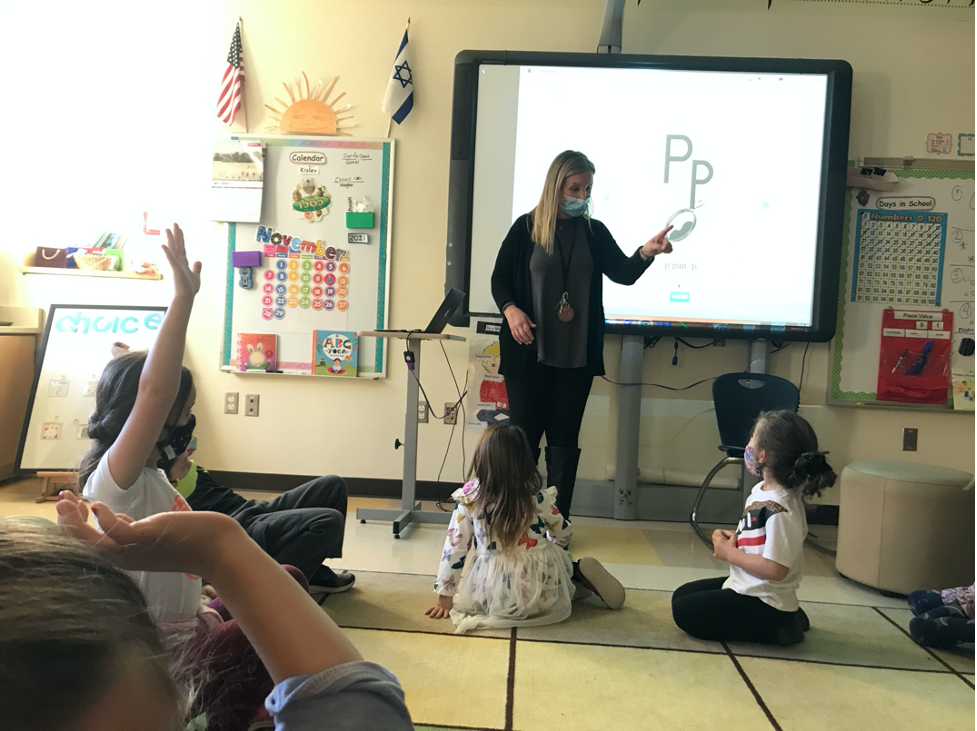 Kindergarten utilizes the Fundations curriculum. Rashi Literacy Specialist Hanna Crosby works in partnership with Kindergarten Lead Teachers Ms. Fine, Mrs. Liptz, and Mrs. Findlay on the Kindergarten literacy curriculum. Kindergarten literacy lessons are instrumental in building both a Kindergartener’s love of words and literacy, and the concrete skills they need to succeed. Letters are thoughtfully and systematically introduced to students. Students make joyful and full-body connections with the letters. One way is through yoga poses modeled after the letters, including the X — Kindergarteners and their teachers posed like an x-ray fish, or Y — Kindergarteners posed like a yak. Using movement, students learn to embody the placement of lines on the writing grid: the sky line, plane line, grass line, and worm line.
Kindergarten utilizes the Fundations curriculum. Rashi Literacy Specialist Hanna Crosby works in partnership with Kindergarten Lead Teachers Ms. Fine, Mrs. Liptz, and Mrs. Findlay on the Kindergarten literacy curriculum. Kindergarten literacy lessons are instrumental in building both a Kindergartener’s love of words and literacy, and the concrete skills they need to succeed. Letters are thoughtfully and systematically introduced to students. Students make joyful and full-body connections with the letters. One way is through yoga poses modeled after the letters, including the X — Kindergarteners and their teachers posed like an x-ray fish, or Y — Kindergarteners posed like a yak. Using movement, students learn to embody the placement of lines on the writing grid: the sky line, plane line, grass line, and worm line. 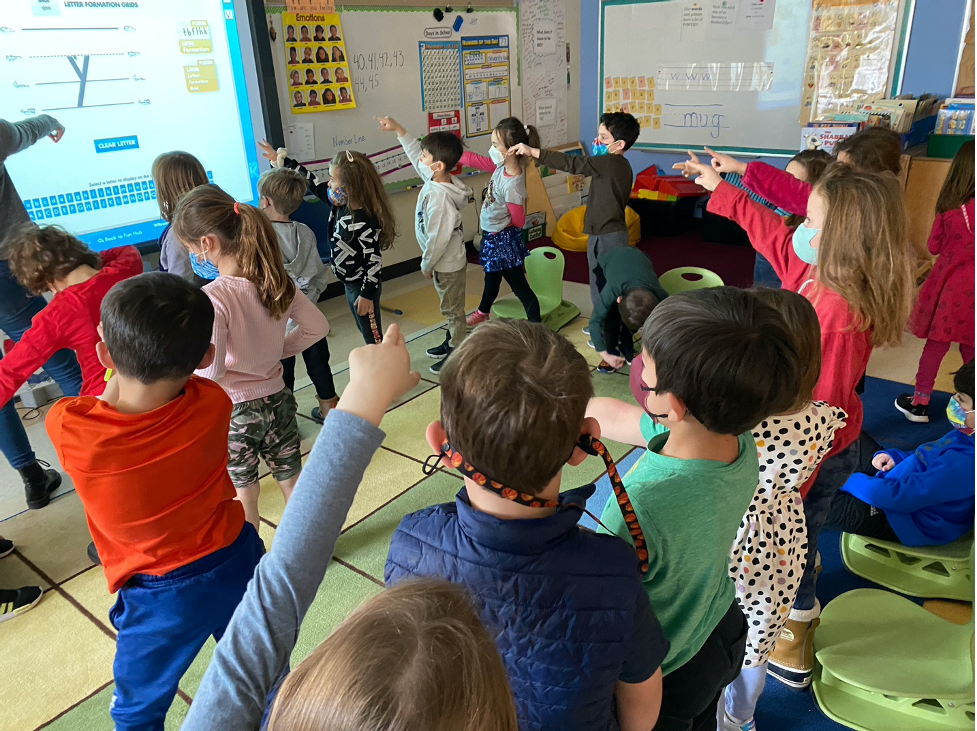

 Using sound, students practice forming letters with white boards and “tapping out” (sounding out) and spelling both real and nonsense CVC (consonant/vowel/consonant) words using magnet boards.
Using sound, students practice forming letters with white boards and “tapping out” (sounding out) and spelling both real and nonsense CVC (consonant/vowel/consonant) words using magnet boards. 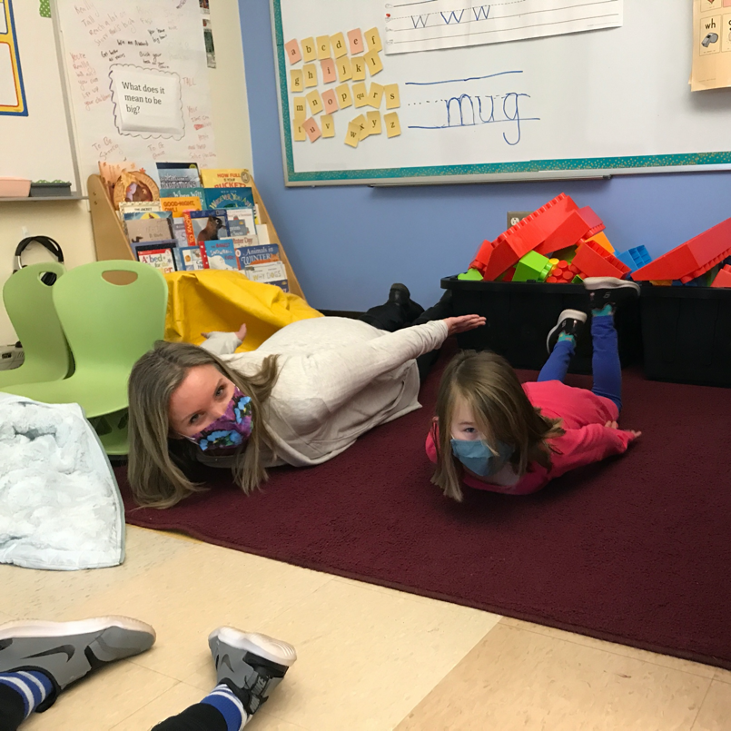 Mrs. Liptz shared, “every student is encouraged to take “writing risks” that demonstrate and bolster their skills. For one student, this might look like adding written details to illustrations, for another student it might be adding spaces between words or incorporating some of the lowercase letters we have learned, while for another student it might be working one-on-one with a teacher to sound out CVC words (consonant/vowel/consonant). Everyone is working towards different literacy goals and we want EVERY child to see themselves as readers and writers.”
Mrs. Liptz shared, “every student is encouraged to take “writing risks” that demonstrate and bolster their skills. For one student, this might look like adding written details to illustrations, for another student it might be adding spaces between words or incorporating some of the lowercase letters we have learned, while for another student it might be working one-on-one with a teacher to sound out CVC words (consonant/vowel/consonant). Everyone is working towards different literacy goals and we want EVERY child to see themselves as readers and writers.” 